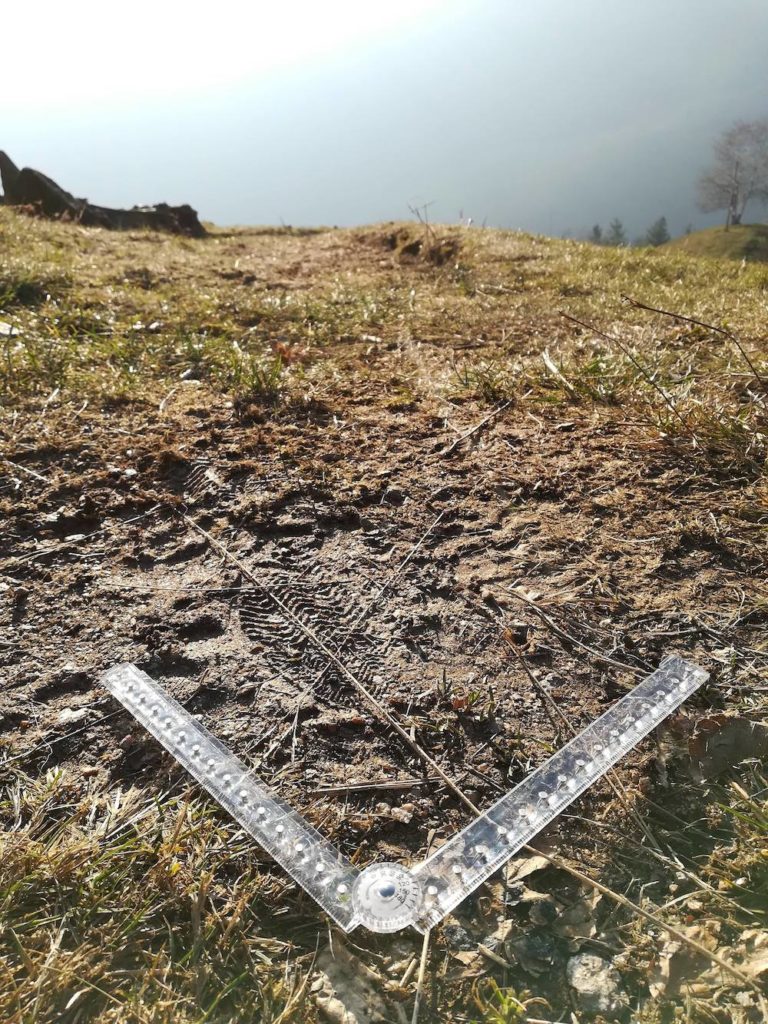Tracking is defined as the ancient Art and Science of detecting, interpreting and reading human and animal tracks.
We are made to learn, and this is widely demonstrated by the most ancient history when our ancestors laid the foundations of survival by knowledge of the territory and the seasons in order to successfully build the first communities and defend the boundaries of early settlements.
Learning the Art of Tracking
We are made to learn arts, techniques, and skills to guarantee us and our children a better life. The skills we focus on are hunting, orientation, lighting fires, preserving food, and building durable shelters. In short, the history of humanity could be reduced to two verbs: learning and passing on. Between them, there is room for evolution, for failures and for successes, for conservation as well as for destruction.
Of course, learning is not an immediate or simple process.
Specific arts and techniques appear almost congenital to some individuals, to others they represent,
at least initially, a series of obstacles that only time and experience can bring to the level of an
almost automatic method.
“Psychology states that learning is the sum of the following circumstances: disposition, alertness,
purpose of learning, interest in what is to be learned.“
I personally fully agree with this sentence.
However, if we think of the concept a few lines above, learning also becomes a conquest, a passage of vital information from one subject to another. Again, I like to consider the act of transferring such data a privilege to which the teacher must pay due honor. I strongly believe in the goodness of this art. Just as frequently I have associated tracking with the plural noun benefits. Tracking is not an art that is good in itself, it is a beneficial art.
What History Can Teach Us
So, towards something so significant, my attitude in the first place can only be one of devotion and humility, and these are the values that I try to convey to all my students who are going to learn the fundamentals of tracking men and animals. I usually find myself stressing to them that they should be in no hurry to see or interpret; although dictated by the honest desire to enter quickly into this Art, an attitude moved by haste quickly proves to be negative.
Historical facts about this Art started to be recorded from AD 500 onwards. Trackers from Germanic tribal communities used to have the task to find poached wildlife, stolen livestock as well as burglars. Later on, some interesting documents came from Rogers’ Rangers. The Maj. Robert Rogers happened to be the very first individual, as we can read in several texts, to “blend skills learned from Native American people and his own tactics”. This immediately came up to be not only extremely brilliant but also very innovative.
The 28 so-called “Rules of Ranging” were created in late 1757, in the middle of the French and Indian War (1754-1763); they were intended to become valuable guidelines for Rogers’ Rangers, including not only reconnaissance and survival skills, but also the art to Tracking, in the pursuit to find and follow enemies, or even to counter-track them.
This Art, based on the enhancement of observation and deductive skills, served not only the regiment of Maj. Robert Rangers, but it has made, in several cases (as we will see in the next articles), a real difference between life and death. Think, for example, to the adventurous, and often full of dangers, life of Trappers. These heroic Mountain Men used to apply their skills in Tracking to trap animals as well as to reckon if there were any enemies nearby. Some of them, like Kit Carson, have become real legends of the Old Frontier.
Later on, Indian Scouts made their time during the Indian Wars, and this Art has been successfully traded till the Vietnam War, often conjugated to the K-9.
In 2007, Combat Hunter Program had officially reintroduced the training in Tracking for the detection of C-IED, pointing the spotlights again on this Art, which, nevertheless, never abandoned dimensions of application such as Search and Rescue, Border Patrol, Wildlife Conservation and Forensic Science (often paired with BPA – Blood Pattern Analysis).
How Tracking Works
Let’s go deeper in how the Art of Tracking works.
The fundamentals of it dwell in two topics: Where to look, and How to look.
Let me mention a meaningful quote by Charles Worsham: “You see what you know or think to know. The trick is to know what to see“. The situational awareness that you are able to conquer and develop thanks to Tracking is kind of priceless, that’s why it is still so valuable in different contexts.
Consider, for example, to detect a possible infiltration into private property. Without the presence of perimeter cameras or any other device, it could be quite impossible to determine if anyone has approached or hadn’t.
If you are lucky enough to spot easy footprints on the ground (and immediately reckon you aren’t the maker of them), well, it’s done. Following them sounds like a game for kids.
But what happens if the terrain outside the property is dry or has no grass in the courtyard? Learning to read tracks will help you find traces of anyone’s steps. Or the absence of them, which is, simply, evidence by itself. The answer is: there’s no terrain in which you cannot track. There’s also no weather condition which prevents tracking.
Tracking Footsteps
Footsteps on gravel can be noticed by the presence of loosened pebbles that have been interrupted by the footsteps of a person, a vehicle, or an animal. The Tracking terminology calls them “disturbances”. They can be extremely visible (for example, we also spot the naked, dark soil beside the pebbles shifted) or totally hard to see. Learning how to spot them, at first sight, requires years of experience and what is commonly called “dirt time on ground”.
Observation and deduction are two essential phases in Tracking. Without a proper visual analysis of
a terrain (as well as of an entire environment), you cannot start Tracking. Deduction is the
consequential step. You see the shifted, above mentioned, pebbles on gravel soil and you deduct
several details.
Some terrain can be of eager aid to a Tracker. I’m speaking of muddy or sandy areas, most of all. Most apparent tracks appear on this type of terrain, as well as on certain types of snow. They immediately capture our attention, which is why Mike Hull described them as “local newspapers”. This is totally true. Observing all the footprints helps you to form the mentality of a good Observer and Tracker too.
As we will soon see in further articles, one single footprint can reveal a lot of data.
Combining all the elements together is just like to complete a puzzle. The more details you are able to gain from the terrain, the more accurate your puzzle will be.











